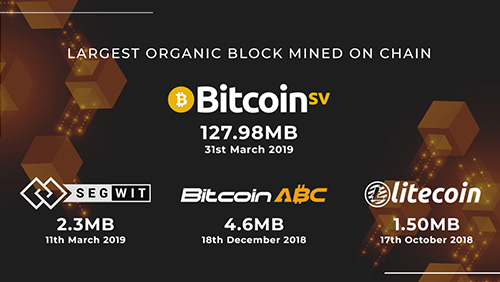It wasn’t long ago when Bitcoin ABC claimed that big blocks could not be reliably done and would only cause insecurity and instability—at least for the Bitcoin Cash network. But with only five months after it rebirthed the original Bitcoin as envisioned by Satoshi Nakamoto, Bitcoin SV(BSV) is proving that yes, massive on-chain scaling is possible. And now that Bitcoin’s true power is finally unleashed, a more efficient digital currency network and commodity data ledger are providing possibilities the world has been waiting for.
This past week marked another milestone for BSV, as the network proves that with on-chain scaling, organic growth is very much achievable. On March 31, a 128MB block was mined by CoinGeek Mining. 128MB is the current default block cap set on BSV, so this world-record setting block completely filled the current maximum. The block contained large data files (high-resolution pictures) uploaded using the “BitPaste” multi-swipe application, which makes it easy for users to upload large files with quick swipes of the Money Button.
This is the second time a block that size was mined on the BSV network. Just a day earlier, on March 30, another 128MB block was mined by nChain’s BMG Pool.
Both 128MB blocks generated transaction fees for the successful miner of 1.279 BSV, thus another 10+% of miner revenue on top of the normal 12.5 BSV block reward. This is worth noting, because it demonstrates how massive on-chain scaling allows more transactions (of differing data types and thus differing fee levels) in a block, which, in turn, results in greater total transaction fees for the miner on top of the pre-set block reward. Bitcoin block rewards halve every four years, and happens again next year as the block reward reduces from 12.5 to only 6.25 coins. Therefore, Bitcoin’s economic model requires miners to progressively earn more in transaction fees to make up for the continually-reducing block reward value, in order to mining to remain profitable and miners to continue sustaining the network. That only happens with bigger blocks and massive on-chain scaling—as now demonstrated by the BSV network—to ensure Bitcoin’s long-term success.
